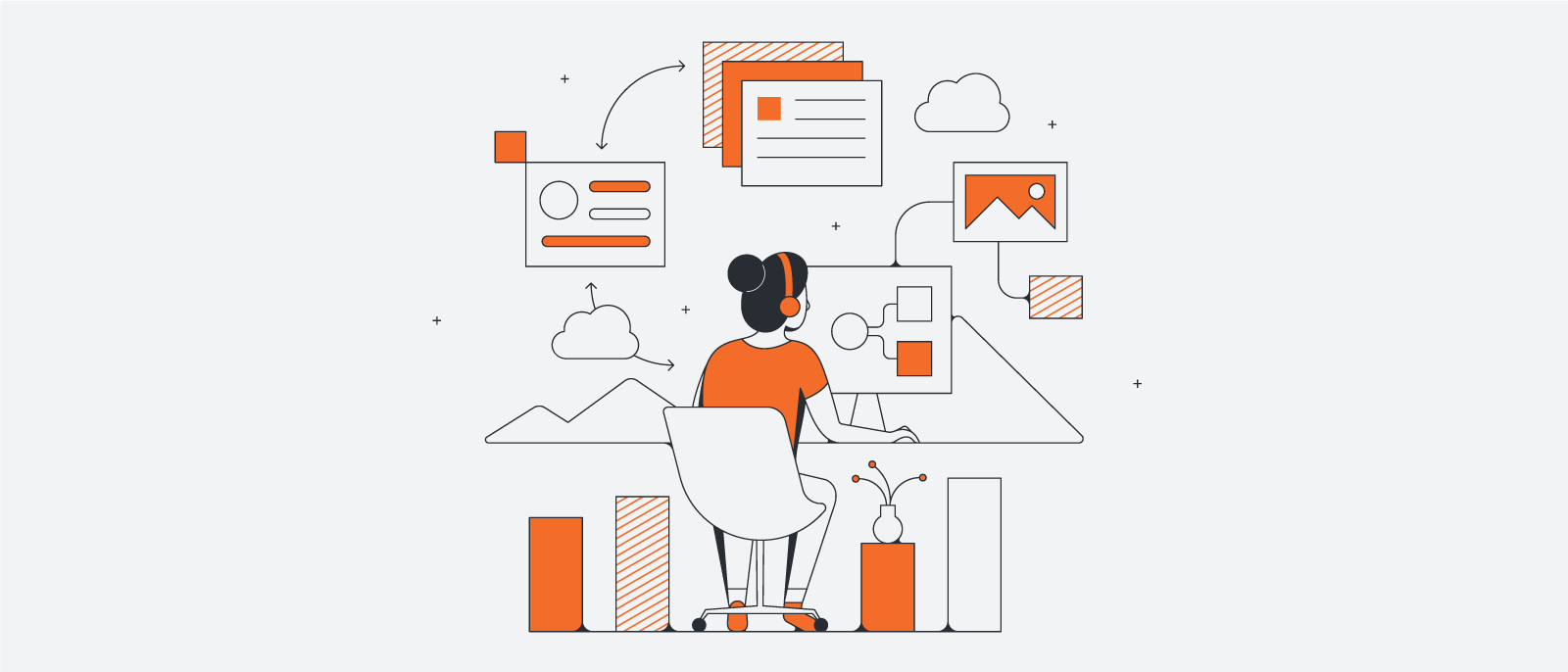
Webisodes with Alec Sharp: Taking business processes from “as-is” to “to-be”
Reading time: about 7 min
Topics:
You can’t improve something if you don’t know what’s wrong with it. Effective change requires first identifying problems that need to be addressed. This holds true for improving a business process.
Of course, this raises a question: How do you go about identifying problems in a business process? And, taking it a step further, how do you take that list of problems and turn it into a set of actionable steps for improvement?
Enter as-is and to-be analysis.
We were lucky enough to work with Alec Sharp, senior consultant at Clariteq, to create a series of webisodes addressing this very topic. We’ve compiled all of Sharp’s great info into a series of blog posts.
Read on to learn all about an industry expert’s insights on as-is process analysis, to-be analysis, and how to get from the first stage to the next, or watch the episode here:
The six enablers of business processes
If you’re new to the concept of as-is process analysis, don’t worry, it’s exactly what it sounds like. As-is process analysis is simply the analysis and documentation of a business process as it currently exists. Typically, the first step in as-is analysis is to create a swimlane diagram. Swimlane diagrams illustrate the sequence of the steps in a process, what needs to happen at each step, and who is involved.
As mentioned above, creating a swimlane diagram is the first step, and far too many people stop there. But simply creating a diagram doesn’t solve any of your problems. You have to actually unpack and discuss the process depicted in the diagram.
To do this, Sharp recommends thinking of your process as a combination of six factors, or as he calls them, six enablers. An enabler is simply a factor that can be adjusted to alter the performance of a process. They are, in his words, “the dials and levers of process change.”
In the following section, we’ll take a look at each enabler in depth.
Business process design
The first of Sharp’s enablers is business process design or what we typically think of as the process itself. This enabler includes elements such as roles, steps and decisions, sequence and handoffs, etc.
To identify areas of improvement—those to-be moments—in your business process design, ask yourself a series of questions:
- Are there too many actors, or are activities too granular?
- Is each step adding value to the process?
- Are there any unnecessary intermediaries in the process?
- Are steps arranged and executed in the most natural sequence?
- Is approval actually required at each approval stage?
Consider these questions a methodology for analysis. As you answer each one, you’ll likely become aware of areas in need of improvement. You can then take that info and use it to inform your to-be business process model.
In the next five sections, we’ll look at the remaining five enablers as well as the key considerations or, as Sharp calls them, assessment points, for each.
Technology and information systems
This enabler covers the applications, data storage systems, information systems, and devices you need in order to perform your business process. Technologies change and improve, so it’s always a good idea to assess the technology you rely on.
The assessment points for this enabler are:
- Do you have to re-enter data unnecessarily?
- Are any applications missing vital functionality?
- Are you leveraging new technologies?
- Is any of your software overly complex?
Motivation and measurement
This enabler, motivation and measurement, takes us into the first of three human, social, and organizational factors that contribute to the success or failure of business processes. As you consider the motivation and measurement enabler, you’ll look at your metrics for success.
To find areas of improvement, remember to consider these key assessment points:
- Are you measuring processes appropriately?
- Is your focus on the customer?
- Are you measuring tasks or outcomes?
- Are your metrics easy to game or inflate?
- Are you incentivizing the right behaviors?
Human resources and organization
This enabler is all about hiring and employee roles. It’s easy to squander the talent of your team by assigning them to ill-fitting roles. To avoid this, ask yourself these questions:
- Are there any mismatches between the value of a task and the individual performing said task?
- Do employees feel empowered and take ownership?
- Are you still recruiting for past needs?
- Do you rely on specific roles to hold the process together?
Policies and rules
This enabler is one of the more self-explanatory of the six. Policies and rules exist for a reason—usually to ensure that you’re meeting legal, industry-imposed, and other regulatory requirements. However, companies often have rules and requirements with no clear source—they simply exist. And their existence often creates bottlenecks and other delays.
To identify any unnecessary policies or rules, remember these four assessment points:
- Are any of your policies or numerical limits out of date?
- Is each review, inform, or approval step necessary?
- Do you have any inconsistent or conflicting policies?
- Does each policy or regulation have a clear source?
Facilities
The final enabler to consider in your as-is analysis is your facilities, the physical location where the business process is carried out. Or, in some cases, the digital spaces used to complete a process. These might include platforms used to store and share data, information, and knowledge.
To determine how optimal your facilities are, reflect on this series of questions with your team:
- Do the facilities match your work needs?
- Does the layout impede the flow of work, information, people, or materials?
- Did you build your process around the facilities and not around the optimal workflow?
- Does the facilities flow bear any relation to the flow of work?
Pivoting from as-is to to-be
One of the biggest pitfalls of as-is analysis is quitting too soon. Some teams create a swimlane diagram, tweak a few obvious bottlenecks, and get right back to business as usual. Don’t let that be you.
And, if you follow Sharp’s six enabler framework, it won’t be you.
Rigorous as-is assessment requires you and your team to not only document your current process but to analyze and discuss it. Most of your ideas for improvement will come from this discussion, not your swimlane diagram.
The six enablers that Sharp outlines are designed to facilitate discussion. When it comes to as-is analysis, it’s easy to address the usual suspects—business process design and technology—without doing any real digging into the other elements of your process. And yet, as Sharp explains, the biggest problems typically fall under the three human, social, and organizational enablers: motivation and measurement, human resources, and policies and rules.
If you address each enabler in turn, the transition from as-is to to-be analysis will happen naturally. You’ll have plenty of ideas on how to improve your business process, and you’ll be raring to get those changes implemented.
The value of framework
The biggest selling point of Sharp’s framework is that it works. Let’s take a look at why. His method, looking at each of the six enablers of business processes in turn, is successful largely because it is methodical.
There’s always the temptation to rush through as-is analysis. It’s the improvements people are excited about, and so they skip the most important step of taking the time to consider each area that could possibly be improved. Sharp’s framework forces you to slow down. And, paradoxically, it helps you quickly identify areas in need of improvement that would normally be missed.
But don’t just take our word for it! To apply this framework at your enterprise, think about elements of your processes that fit in with one of the six enablers. Move on to each of the other five and you’re off to the races.

Watch Alec’s webisode series with Lucidchart.
Watch nowAbout Lucidchart
Lucidchart, a cloud-based intelligent diagramming application, is a core component of Lucid Software's Visual Collaboration Suite. This intuitive, cloud-based solution empowers teams to collaborate in real-time to build flowcharts, mockups, UML diagrams, customer journey maps, and more. Lucidchart propels teams forward to build the future faster. Lucid is proud to serve top businesses around the world, including customers such as Google, GE, and NBC Universal, and 99% of the Fortune 500. Lucid partners with industry leaders, including Google, Atlassian, and Microsoft. Since its founding, Lucid has received numerous awards for its products, business, and workplace culture. For more information, visit lucidchart.com.
